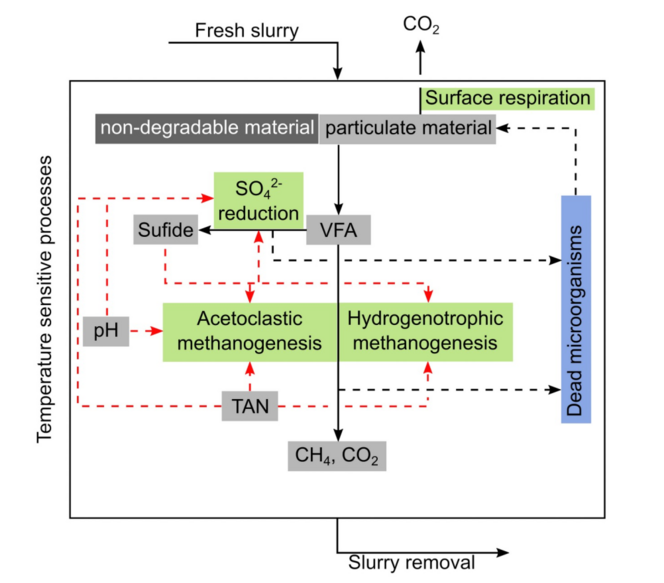Animal agriculture is a significant source of ammonia, greenhouse gases, and other air pollutants.
It is not realistic to measure emissions of these compounds across diverse climates, time scales, spatial scales and management systems in order to understand and reduce detrimental effects. This gap is filled by mathematical models, which also offer process insights not provided by measurements alone. Our group develops such models for understanding, estimating, and managing agricultural air pollution.
The models are used for emissions inventories, decision support, resource management, and for testing our integrated knowledge. Emission of ammonia and the greenhouse gas methane from animal waste presently receives most of our attention, but sulfur, and organic compounds from multiple agricultural sources are all in our field of view.
We work with authorities and agricultural technology suppliers to facilitate the application of our models, and to make emissions estimates or software tools available to users.
Measurements made by other groups in Environmental Engineering, as well as results from laboratory and field experiments that we carry out, are essential for development and evaluation of our models.
